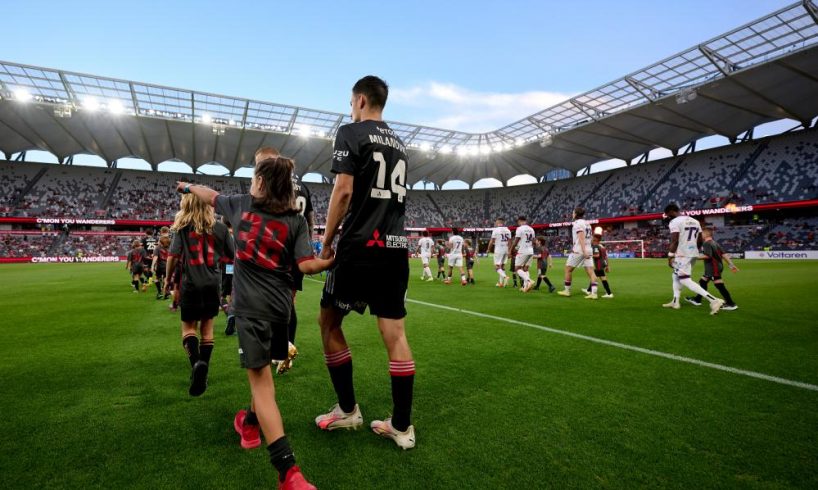
Photograph: Brett Hemmings/Getty Images
The A-League is not in a good place. In truth, it hasn’t been for years now, existing more on the unrequited hope that it will be this new season, this new reform, or this new initiative that restores the glory days of 61,880 filling Stadium Australia for a Sydney derby. And yet the events of the past weeks make it feel like it’s sinking to some new circle of hell.
Three years after an “unbundling” process was completed and it took control of Australian top flight from Football Australia, the private Australian Professional Leagues (APL) moved to make redundant nearly half its workforce, commencing the latest in a long line of upheavals surrounding the league’s viability.
Related: A-Leagues become global outlier after rule change on premiership standings
Any organisation shrinking its workforce by half has made a tacit admission that things are going badly and an urgent course correction is needed to prevent collapse. Now, dozens of people are out of work during a cost-of-living crisis. Most attention-grabbing of the “streamlining” efforts was the effective closure of the league’s media arm Keepup, as well as a host of cuts to most departments outside its football and commercial arms. And for those below the C-suite level, it’s impossible not to feel they’ve become victims of executive hubris.
One would be forgiven for observing the past three years and concluding that the APL wasn’t in the football business, nor did it want to be. Instead it envisioned itself at the forefront of a burgeoning sports entertainment empire, with a bit of tech thrown in, where everything was slick, polished and presented in the indecipherable language that justifies these kinds of things. “Strap yourselves in. Here Comes The Future,” wrote former chief executive Danny Townsend just over two years ago, as tens of millions of dollars were invested.
But the future is here and it’s not what was envisioned. The league spoke of needing to be ambitious and take risks to grow the game – and began their project with large amounts of goodwill, if not outright excitement – but the gambles have failed to land and that money is now a sunk cost. We don’t have to guess this, the league has told us so by slashing a workforce of highly talented people who toiled to deliver what looked to have been Sisyphean promises. Instead, there will be a shift in focus and a leaner organisation to focus on football.
Given the landscape, it’s probably the only decision that could have been made by a new executive leadership team and independent chair in former parliamentarian Stephen Conroy. And in time, the hope will probably be that the moves are seen as a painful but necessary step on the pathway to sustainability – a recession the league had to have. That’s a view prominent among the league’s clubs who saw the rapid expansion of head office, and the expansive priorities underlying this growth, as being incompatible with their reality on the ground.
But, at the same time, what does a focus on football even mean? Because for all the long and not-so-glorious adventures in governance and commercialisation surrounding it, Australia’s relationship with the game itself is a complicated one, defined by conflicting and contested perspectives on what the sport needs to be long before the APL was even a concept.
The A-Leagues are salary-capped leagues that bar transfers between their teams and eschew promotion and relegation. Their expansion and growth are dictated by market sizes and commercial opportunities. It is played in the summer and the men’s league has an uneven fixture list emphasising commercial tent-pole derbies and rivalries. Just last month, it was revealed the APL had eschewed goal difference as its preferred ladder tiebreaker for wins, ostensibly to encourage attacking play – despite recent goal-scoring records.
None of these are broadly in line with global standards, but they are broadly reflective of decision-makers’ interpretations of the game’s resilience in an Australian context. Many have their foundation stretching back decades, to the National Soccer League and the hostile landscape it inhabited.
So what does a pivot to a football-focused organisation mean for the A-Leagues? Is it turning back the clock to when it first unbundled – or before? Or charting a new course, with a ball in the sky as its North Star? We can only guess, as Conroy and commissioner Nick Garcia have not been available to answer questions.
Going back to basics was, regrettably given the human cost, probably the right call. But what’s next? It’ll be football, but will it be as we know it?






